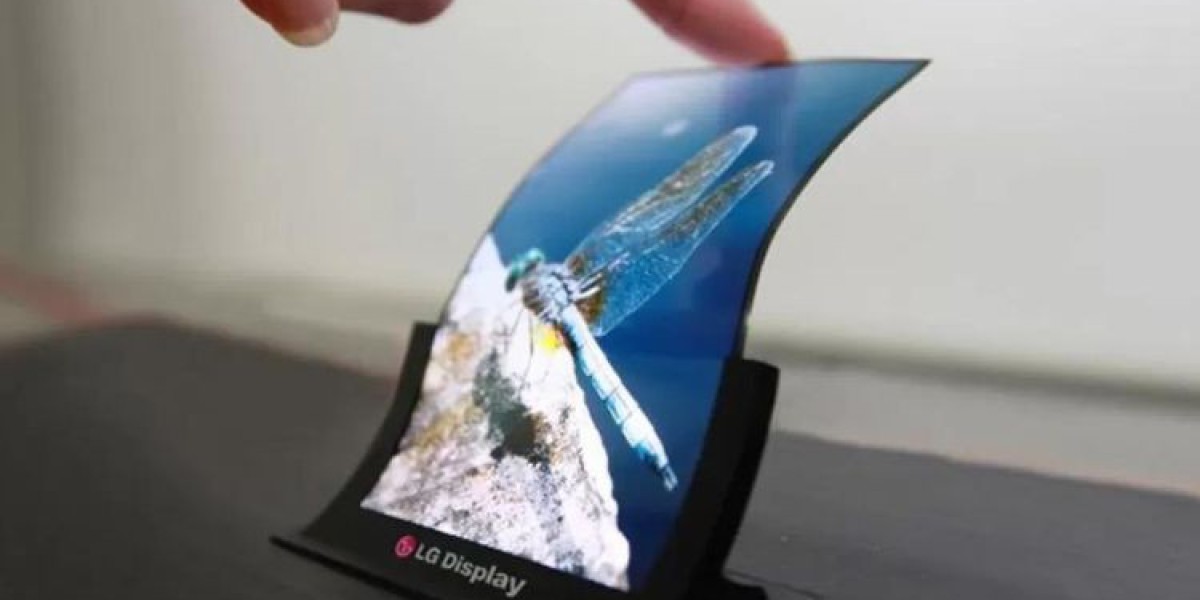The global flexible display market size attained a value of more than USD 18.71 billion in 2023. The market is further expected to grow in the forecast period of 2024-2032 at a CAGR of 33.5% to reach over USD 251.88 billion by 2032. This staggering growth is, in part, driven by the remarkable rise of foldable smartphones. In this blog post, we will delve into the fascinating world of foldable smartphones and explore how they are revolutionizing the flexible display market.
Evolution of Foldable Smartphones
Foldable smartphones are not a new concept, but their evolution over the years has been truly remarkable. In the early days, foldable prototypes were more science fiction than reality. However, continuous research and development efforts have brought us to a point where foldable smartphones are not only real but also increasingly accessible.
Historical Context To understand the significance of foldable smartphones, it's essential to look back at their historical context. The idea of a device that could fold or bend dates back to early sci-fi stories and prototypes. These early concepts laid the foundation for what would eventually become the foldable smartphone.
Key Milestones The journey from concept to consumer product has been marked by several key milestones. Companies like Samsung, Huawei, and Motorola have played pivotal roles in pushing the boundaries of foldable technology. The introduction of devices like the Samsung Galaxy Fold and Motorola Razr marked significant milestones in this evolution.
Current State of the Foldable Smartphone Market Today, the foldable smartphone market is a burgeoning segment of the tech industry. It's no longer limited to a few experimental devices but has expanded to offer a variety of options for consumers. From clamshell designs to devices that transform into tablets, the market is diverse and competitive.
Flexible Display Technologies in Foldable Smartphones
At the heart of every foldable smartphone is a flexible display. These displays are the key enabler of the device's folding mechanism. Let's explore the technologies that make these displays possible.
Flexible OLED One of the most common technologies used in foldable smartphones is Flexible OLED (Organic Light-Emitting Diode). OLED displays offer several advantages, including vibrant colors, high contrast ratios, and fast response times. What makes them suitable for foldable devices is their flexibility, allowing screens to bend without damage.
Other Display Technologies While OLED is the dominant technology, other display technologies like AMOLED (Active Matrix Organic Light-Emitting Diode) and E-paper (Electronic Paper Display) are also utilized in foldable smartphones. Each technology comes with its own set of advantages and trade-offs, influencing the design and functionality of the devices.
Benefits of Foldable Smartphones
The rise of foldable smartphones is not just a technological marvel; it also brings numerous benefits to consumers.
Enhanced User Experience Foldable smartphones offer a unique user experience. They allow users to switch between a compact form factor for portability and a larger screen for enhanced productivity and media consumption. Multitasking becomes more intuitive, with the ability to run multiple apps side by side.
Portability and Compactness One of the standout features of foldable smartphones is their portability. When folded, they easily fit into pockets or bags, making them convenient for on-the-go users. This compactness is a game-changer for those who prefer a minimalist approach to carrying their devices.
Potential Use Cases Foldable smartphones have the potential to disrupt various industries. For example, they can serve as an all-in-one device for professionals who need both a phone and a tablet for work. In healthcare, foldable devices can enhance the viewing experience of medical images, benefiting both doctors and patients.
Challenges and Hurdles
While foldable smartphones hold immense promise, they also face several challenges that need to be addressed for widespread adoption.
Durability Concerns The durability of foldable displays is a top concern. Early iterations faced issues with creasing and screen damage. Manufacturers are continuously improving the materials and design to enhance the lifespan of these displays.
Cost Considerations Foldable smartphones tend to come with a premium price tag. This cost can be a barrier to entry for many consumers. As technology matures and production scales up, prices are expected to become more competitive.
Software Optimization To fully harness the potential of foldable displays, software needs to adapt. App developers need to optimize their applications to take advantage of the foldable form factor. Operating systems also need to support seamless transitions between folded and unfolded modes.
Market Impact
The introduction and growing popularity of foldable smartphones have significant implications for the flexible display market.
Market Growth The flexible display market has experienced robust growth thanks to the demand generated by foldable smartphones. As more manufacturers enter the foldable device space, the market for flexible displays is poised for exponential growth.
Revenue Generation Foldable smartphones have become a source of substantial revenue for companies in the tech industry. Leading manufacturers are investing heavily in research and development to gain a competitive edge in this market.
Competitive Landscape The foldable smartphone market is highly competitive, with several major players vying for market share. Companies like Samsung, Huawei, and Xiaomi are at the forefront, driving innovation and setting industry standards.
Future Trends and Possibilities
The future of foldable smartphones is filled with exciting possibilities.
Predictions Experts predict that foldable smartphones will continue to evolve, becoming more affordable and durable. They may become the standard for high-end smartphones, with a range of form factors and features to cater to different consumer needs.
Emerging Technologies In addition to foldable displays, emerging technologies like under-display cameras, improved haptic feedback, and enhanced stylus support could further enhance the user experience. Foldable devices may also find applications in industries beyond consumer electronics.
Impact on Other Industries Foldable technology's impact extends beyond smartphones. It could influence the design and functionality of tablets, laptops, and other portable devices, potentially reshaping entire product categories.
Conclusion
In conclusion, foldable smartphones are not just the latest tech trend; they are driving a transformation in the flexible display market. With their ability to seamlessly blend portability and productivity, foldable devices are changing the way we interact with technology. As the market continues to grow, consumers can expect more options and innovations in the world of foldable smartphones. Stay tuned for the exciting developments ahead as we witness the evolution of this transformative technology.



